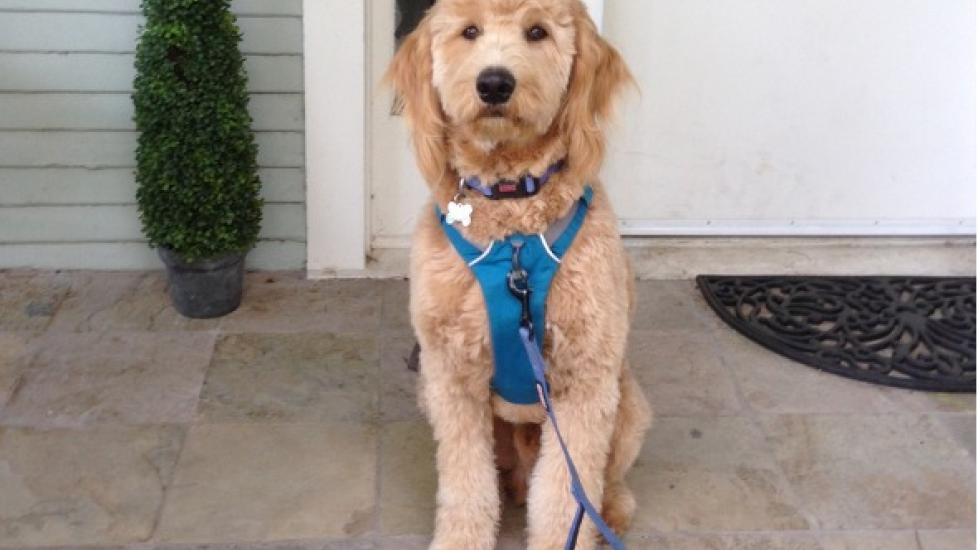In the world of canine training, no-pull dog harnesses have become a popular tool for pet owners seeking to address their furry friends’ leash pulling behavior. These innovative pieces of equipment are designed with both comfort and effectiveness in mind, offering a humane alternative to traditional collars that may cause discomfort or choking when dogs pull on the leash. Let’s delve into how these harnesses work and why they might be an excellent choice for you and your pooch.
Understanding Leash Pulling Behavior: Before we explore the mechanics of no-pull dog harnesses, it’s crucial to understand why some dogs pull on the leash. Dogs often engage in this behavior due to a combination of factors such as instinct (wanting to lead the pack), lack of proper training, excitement, or even anxiety. A good trainer will help identify the underlying reasons behind the pulling and tailor a solution accordingly.
The Mechanism Behind No-Pull Harnesses: The primary principle behind these harnesses is to redirect the force of the dog’s pull away from sensitive areas like the neck and throat, distributing pressure across the chest and back instead. Here’s how it works:
- Distribution of Pressure: When a dog pulls while wearing a no-pull harness, the force is distributed over a larger area, which is more comfortable for the dog than a collar would be. This design encourages them to stop pulling because it doesn’t feel pleasant.
- Control Without Punishment: Instead of punishing the dog for pulling, the harness simply makes it less enjoyable, allowing the owner to maintain control without using harsh methods.
- Positive Reinforcement: Many trainers recommend pairing the use of a no-pull harness with positive reinforcement techniques. For example, rewarding calm walking behavior with treats or praise can teach the dog what’s expected of them.
- Adjustable Fit: Most no-pull harnesses feature adjustable straps that ensure a snug fit, which is essential for effective correction. A properly fitted harness should not restrict movement but should also prevent excessive pulling.
Choosing the Right Harness: Not all no-pull harnesses are created equal, so choosing one that suits your dog’s size, shape, and temperament is important. Consider the following when making your selection:
- Material: Look for durable materials that won’t irritate your dog’s skin. Nylon and mesh are common choices.
- Size and Fit: Measure your dog carefully before purchasing to ensure a perfect fit. Ill-fitting harnesses can be uncomfortable and ineffective.
- Design: Different designs offer varying levels of control. Front clip harnesses provide immediate feedback, while side clip models allow for easier turning.
Training with a No-Pull Harness: Incorporating a new piece of gear into your dog’s routine requires patience and consistency. Here’s a step-by-step guide to getting started:
- Familiarization: Introduce the harness gradually by letting your dog sniff and inspect it before putting it on. Make the process positive by associating it with treats and praise.
- Walk Preparation: Attach the leash to the harness before you start walking, ensuring the dog knows they cannot pull until given permission.
- Short Walks at First: Begin with short walks around familiar areas where your dog is unlikely to get overly excited. Gradually increase distance as progress is made.
- Consistent Reward System: Praise and reward calm walking behaviors consistently to reinforce desired actions. Be patient; positive reinforcement takes time to produce lasting results.
- Professional Help: If you struggle to correct leash pulling, consider consulting with a professional dog trainer who specializes in behavioral issues. They can provide personalized advice tailored to your situation.
By understanding how no-pull dog harnesses operate and implementing consistent training strategies, you can enjoy peaceful strolls alongside your best friend, free from the strain of constant tugging. Remember, every dog is unique, and finding the right approach may require trial and error. With dedication and the right tools, you and your pup can build a stronger bond through joyful walks together.
